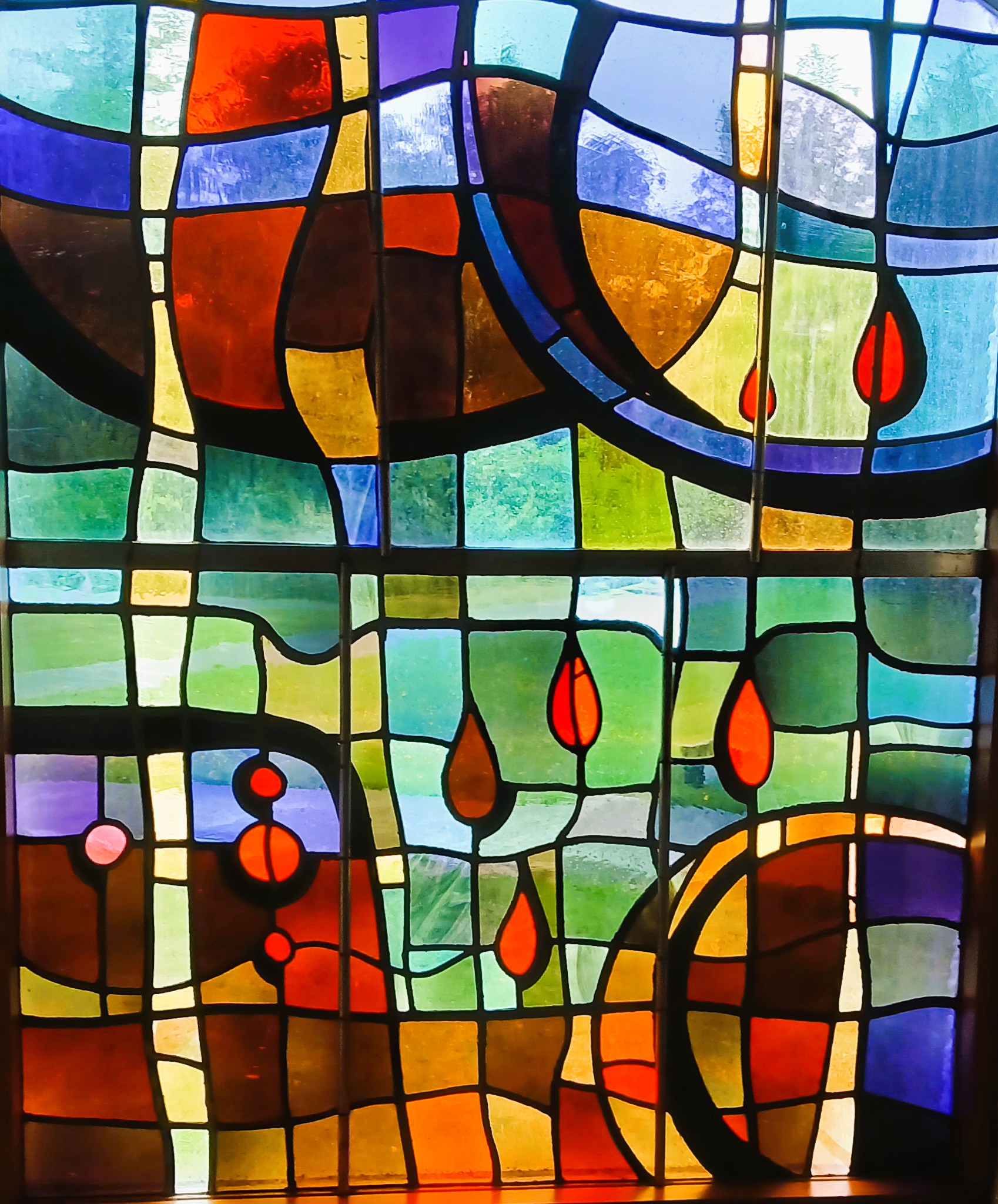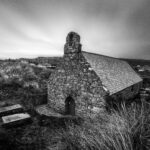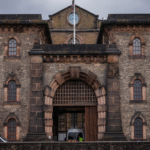Inner Writing
The Donegal Tigers
Some months ago Joel Harland was telling me about the small section of the HS2 project he was responsible for building. He was telling me this included tunnelling under London and how this tunnelling is usually carried out by Irish workers who have massive experience in tunnelling – in fact this is what they do.
We travelled to Donegal for a few days away and on the second day we decided to drive to the end of The Rosses peninsular to the west of Dungloe. It is a rugged coastline and we hoped we might find a deserted beach and good views. It is a Gaeltacht area where Irish is the official language.
We had travelled about seven miles on some very narrow and desolate roads when we came to the village of Meenacross. We decided to stop and have a look at the church there (St Patrick’s). After parking we came across a man who had just finished strimming his grass, I asked if the church was open. He said it was and he would be locking it in about half an hour. We got talking, he was English who had decided to move to this remote area with his wife 15 years ago. It turned out he was the Manager of W.H. Smith in Loughborough, he asked if we knew the town. I told him my dad was born in there and I was born 7 miles down the road – he knew my village.
We got talking, and for reasons I cannot now remember, he told me Donegal was famous for the Donegal Tigers, men who worked tunnelling and mining around the world.
I told him about my conversation with Joel and wondered if his Irish tunnel builders were from Donegal. The man said there was a memorial in a church yard in Dungloe (about ten miles away). It had
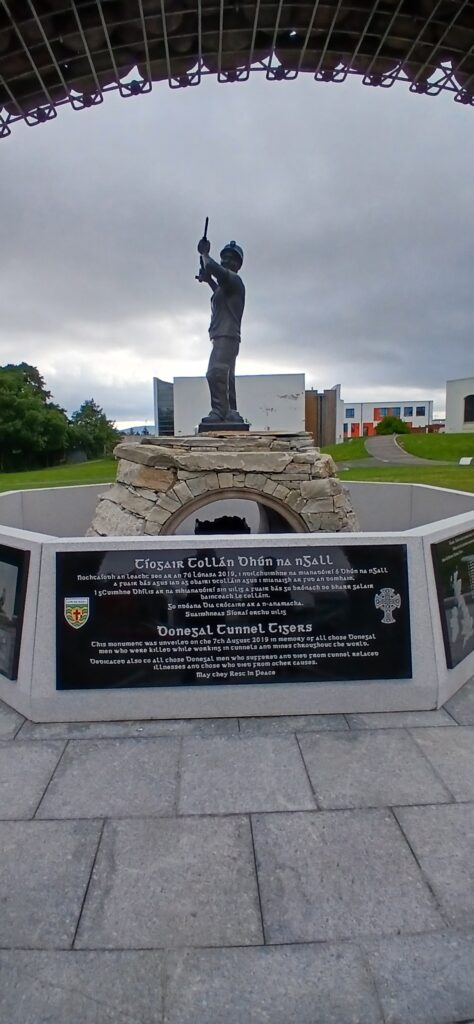
recently been constructed to remember those Donegal men who died working in mines and tunnels throughout the world.
The next day we found the large memorial in the grounds of St Crona’s church, Dungloe. The memorial was unveiled in 2019. It was a large construction depicting a miner working on top of a plinth with a tunnel and track beneath. Around the edge were seven stone surfaces giving the names, dates and locations of those who died. It was notable how many of these men died in Scotland. Seats were arranged around the edge giving space for reflection and to read the names with ease.
After our visit to the memorial we drove into the south-western part of the Glenveagh National park and then out towards Corolly.
Before we hit the main road we stopped outside the country parish church of Min Ui Bhaoill, a striking church made of corrugated iron and painted green.
It is these kinds of encounters which make holidays so rich.
In the church yard, cutting the grass, was an older man who stopped his work to chat.
He was obviously proud of the church and was responsible for much of the maintenance. He had just painted the statues and planted out some pots around the church.
We talked a good while and early in the conversation he told us he had lived in London for a while digging a tunnel for the Elizabeth Line. Remarkably, he too was a Donegal Tiger now home to rest and maintain the church. What a joy it was to meet this man and pass a while with him. How I wish I had asked his name.
He told us he had just finished treatment for prostate cancer, but now it was returning. He said he met another Donegal Tiger in the hospital who also had cancer. The men reflected, he said, that there was a time when they thought they were made of steel. But now finding they were not so.
_________________________________________________________
email from Joel
Tim thanks for sharing.
That sounds like some really special encounters. Yes Donegal has a particular reputation for exporting great miners (and construction workers generally). A lot of our top construction managers at Laing O’Rourke are from Donegal. The surnames on the monument are also very familiar, I’ve worked with a few Gallaghers and Gillespies!
Really nice that you were able to talk to a former miner too and great comment about them being made out of steel or not. They are a special breed, often they are paid partly based on how far the tunnel advances each shift so they work like madmen, they are often rough around the edges but a good share of them are rough diamonds to be honest. They have some nobility as well as being abrasive. I told you before about how they do not start a tunnel drive until they have a shrine to St Barbara (the patron saint of tunnelling, mining & engineering) at the bottom of the shaft. I’ve attached a photo of the one at the bottom of one of our shafts when I worked on Tideway. I wouldn’t be surprised if there are a few shrines of her in Donegal too.
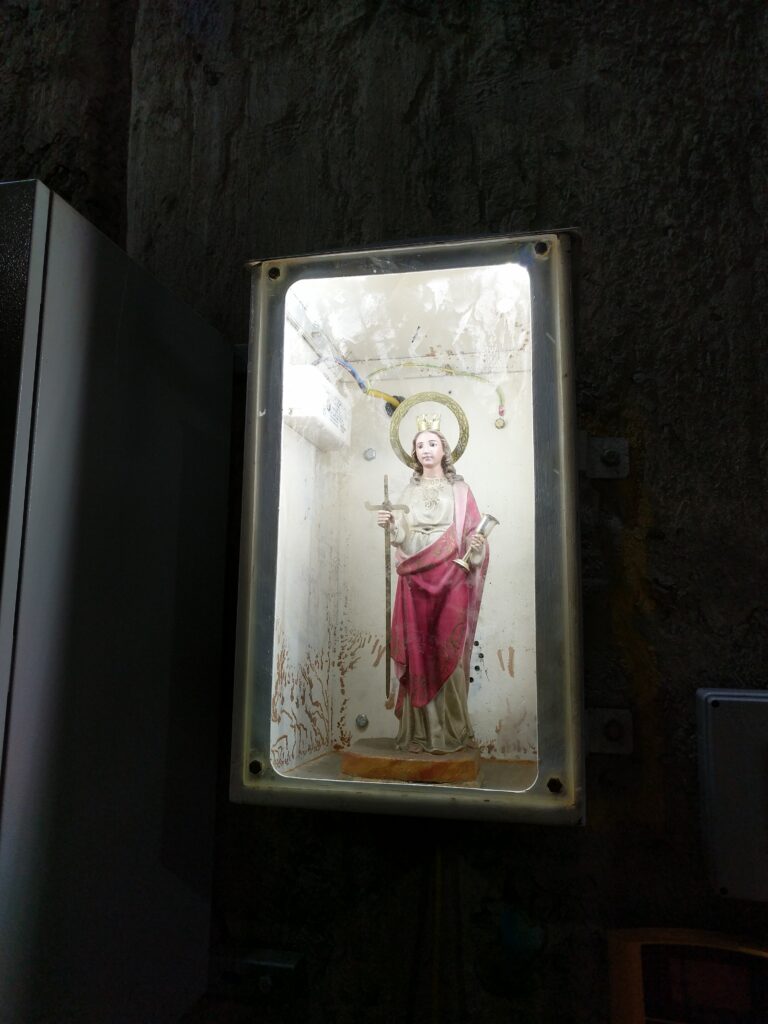
I can believe that quite a few ex miners get cancer too actually, there is a lot of concrete dust floating in the air and this causes silicosis in the lungs.
Glad it was a good trip.
Joel.
Tim Clapton
© please do not reproduce without permission.
